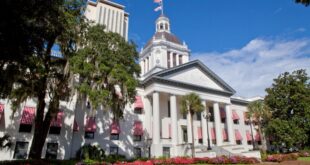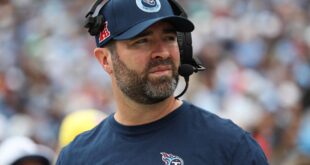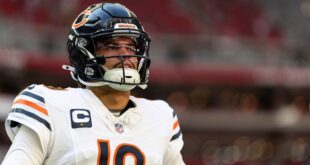Tesla has entered the robotaxi arena. CEO Elon Musk on Thursday unveiled the company’s autonomous Robotaxi vehicle during its We, Robot event at Warner Bros. Studios in Los Angeles. The car shown off is of a silver-chrome hue and features no steering wheel or pedals. It’ll charge via induction and use AI to navigate roads. Musk said the car will cost “below $30,000.”
The process of rolling out fully autonomous, unsupervised driving will begin in Texas and California with the Tesla Model 3 and Model Y next year, Musk said, before the eventual rollout of the Robotaxi, which Musk also referred to as a Cybercab throughout the event.
“We expect to be in production with the Cybercab, which is really highly optimized for autonomous transport in probably — well — I tend to be a little optimistic with time frames,” Musk hesitated, “but in 2026. Before 2027, let me put it that way.” That’s all dependent on regulator approval, as Musk also noted.
“I think it’s going to be a glorious future,” he said.
Musk also unveiled what’s called a Robovan, which is a larger autonomous vehicle that can fit up to 20 people in addition to carrying goods. Tesla demonstrated the Robotaxi and Robovan by having them roam Warner Bros. Studios. Musk opened the event by hailing a ride in the Robotaxi to the keynote stage.
“When we think about transport today, there’s a lot of pain that we take for granted that we think is normal, like having to drive around LA in 3 hours of traffic,” Musk said during the keynote, undoubtedly appealing to those in attendance. “With autonomy, you get your time back.”
Tesla’s Robovan can fit up to 20 people, according to the company.
An increasingly competitive space
The self-driving space is fairly nascent but rapidly advancing. Among the biggest players are Alphabet-owned Waymo, which operates in cities such as San Francisco, Phoenix and Los Angeles; and Amazon-owned Zoox, which hasn’t yet opened to public riders but is conducting testing in cities including San Francisco, Las Vegas and Seattle. GM-owned Cruise, which was suspended indefinitely in California last year after one of its driverless cars hit a jaywalking pedestrian, has also resumed operating manual and supervised rides in certain cities.
Musk and Tesla have long touted what the company calls Full Self-Driving, which has far from lived up to its name just yet. Rather, FSD can help a Tesla vehicle change lanes, park and navigate roads, but a driver needs to remain alert and behind the wheel even with the feature activated. It’s more advanced than Tesla’s Autopilot feature, which includes cruise control-like features and auto steering but can’t carry out more complex tasks like responding to traffic lights and stop signs. (Tesla owners have to pay up to $199 extra per month for FSD.) Earlier this year, Musk mandated Tesla staff to “install and activate” FSD software for every new customer and to give a “short test ride.”
Both Autopilot and FSD have hit road bumps, as California’s Department of Motor Vehicles in 2022 accused Tesla of false advertising when promoting the features. The Department of Justice later that year launched a criminal investigation into the company after more than a dozen crashes were recorded with Tesla vehicles engaging Autopilot software. In December 2023, Tesla recalled more than 2 million vehicles over an Autopilot safety issue, adding a software update aimed at ensuring drivers pay attention to the road, even with the feature activated.
Still, Tesla has long pledged to build a fully self-driving car, with Musk earlier saying he was “highly confident” the car maker could achieve full autonomy in 2021. (That, of course, did not happen.) In fact, Musk proposed the idea of a Tesla robotaxi fleet all the way back in 2019, saying the goal was to have 1 million robotaxis on the road testing without passengers by the end of 2020. (That, too, did not happen.)
Watch this: Everything Announced at Tesla’s ‘We, Robot’ Event
Now, with the unveiling of the Robotaxi and Robovan, Musk touted both the potential time-saving and safety advantages of the autonomous vehicles, saying you could spend more time on your phone, watching a movie or doing work while traveling to your destination.
“It’ll save lives, like a lot of lives, and prevent injuries,” Musk said. “I think we’ll see autonomous cars become 10 times safer than a human.”
In addition to self-driving cars, Tesla also showed off developments on the Tesla Bot, which Musk said could do various tasks like babysit, mow the lawn, get your groceries and “just be your friend, serve drinks — whatever you can think of, it will do.” He says the bot will eventually cost $20,000 to $30,000. A livestream of the We, Robot event showed the humanoids standing behind a bar seemingly serving up drinks to attendees as the keynote wrapped up.
If Musk’s timeline for getting fully autonomous cars on the road seems aggressive, it’s because Tesla has got some catching up to do with other companies that have already hit the ground running. Waymo, for instance, says it provides more than 100,000 trips each week across the handful of cities in which it operates. In addition, the Alphabet-owned company will soon expand to more cities, including Austin and Atlanta, thanks to a partnership with Uber. So for Tesla, the clock is ticking. Whether it actually meets those ambitious timelines, though, remains to be seen.
 meganwoolsey Home
meganwoolsey Home



